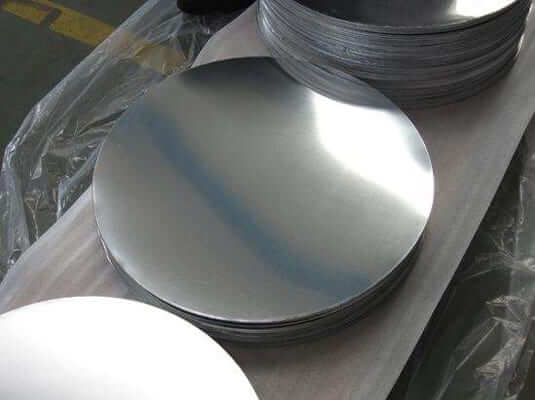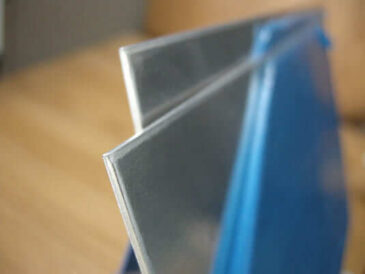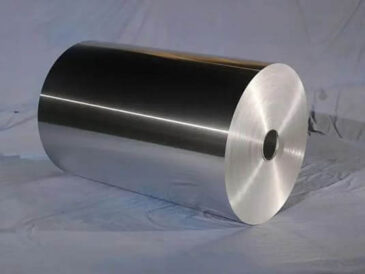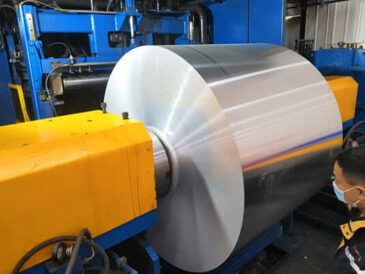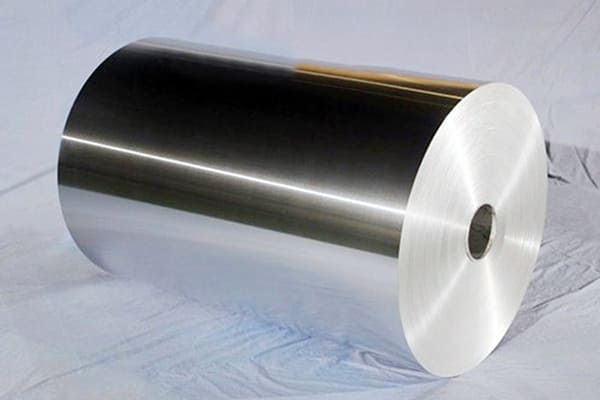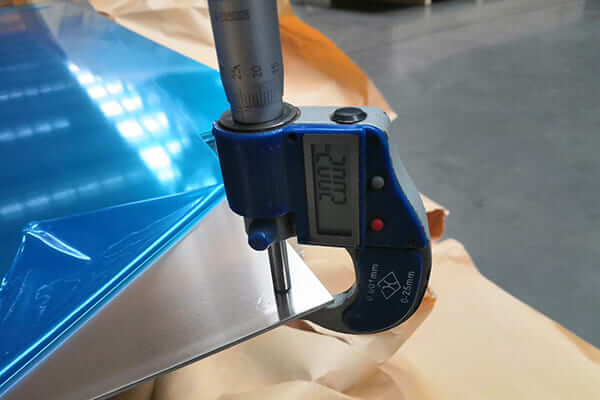What is 1100 aluminum circle
1100 aluminum circles are pure aluminum alloys containing 99.0% aluminum and cannot be strengthened by heat treatment; they have low strength but good ductility. Formability, weldability and corrosion resistance; after anodizing, while obtaining a beautiful surface, the corrosion resistance is further improved.
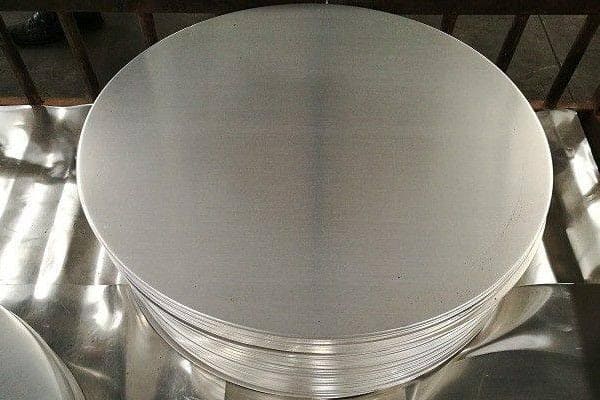
1100 aluminum circle surface display
1100 aluminum circle composition
| Alloy | Si | Fe | Cu | Mn | Mg | Cr | Ni | Zn | Ca | V | Ti | Other | Min.A1 |
| 1100 | 0.95 | 0.05-0.2 | 0.05 | – | – | – | 0.1 | – | – | – | 0.05 | 99 | |
1100 Aluminium circle mechanical properties
| TEMPER | THINCKNESS mm | TENSILE STRENGTH Mpa | ELONGATION % |
| O(SOFT) | 0.5-10 | 60-100 | ≥20 |
| H12 | 0.5-10 | 70-120 | ≥4 |
| H24 | 0.5-10 | 85-120 | ≥2 |
How is Aluminum 1100 Processed
Aluminum 1100 is often used in various applications such as chemical equipment, reflectors, heat exchangers, and kitchenware. The processing of aluminum 1100 typically involves several steps:
Casting
The initial step in processing aluminum 1100 involves melting the raw aluminum and casting it into various shapes, such as billets, ingots, or sheets. These shapes can then be further processed into desired products.
Rolling
Aluminum 1100 can be rolled into thin sheets or coils through a process called rolling. This involves passing the metal through a series of rollers, gradually reducing its thickness to the desired dimensions. This process is commonly used to create aluminum foil, sheet metal, and other flat products.
Extrusion
Extrusion is a method used to create complex shapes by forcing aluminum through a die under high pressure. While aluminum 1100 may not be as commonly extruded as other alloys, it is possible to extrude it to form profiles with unique cross-sectional shapes. This process is useful in creating structural components and frames.
Annealing
Annealing is a heat treatment process used to improve the mechanical properties and formability of aluminum 1100. It involves heating the material to a specific temperature and then slowly cooling it. This process can help relieve internal stresses, increase ductility, and improve the material’s workability.
Machining
Aluminum 1100 is relatively soft compared to other aluminum alloys, making it easy to machine. It can be cut, drilled, milled, and turned on standard machine tools. The alloy’s excellent machinability makes it suitable for various precision components.
Welding
Aluminum 1100 is weldable using various welding techniques, including TIG (Tungsten Inert Gas) welding, MIG (Metal Inert Gas) welding, and resistance welding. Welding may be necessary to join aluminum 1100 components or to make repairs.
Forming and Bending
Due to its excellent formability, aluminum 1100 can be easily bent and formed into various shapes without the risk of cracking. This property makes it suitable for applications where shaping or bending is required.
Finishing
Aluminum 1100 can be finished through processes like anodizing, painting, or powder coating to improve its appearance, corrosion resistance, and durability.

0.9mm 1100 aluminum circle
Quality Control
Throughout the processing steps, quality control measures are taken to ensure that the aluminum meets the required specifications and standards for the intended application. This includes checking for thickness, flatness, and mechanical properties.
1100 aluminum alloy features
Excellent Corrosion Resistance: Aluminum 1100 offers excellent resistance to corrosion, making it suitable for use in a wide range of environments, including marine and chemical applications.
High Thermal and Electrical Conductivity: This alloy has high thermal and electrical conductivity, making it ideal for applications that require efficient heat transfer or electrical conductivity, such as in heat exchangers and electrical conductors.
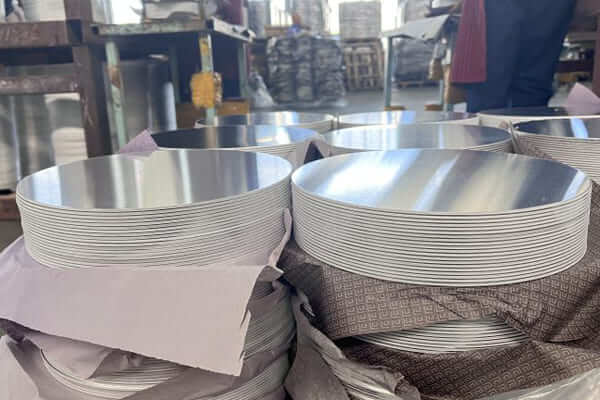
Huawei 1100 aluminum circle
Good Formability: Aluminum 1100 is highly malleable and can be easily formed and fabricated using various processes, including bending, deep drawing, and rolling. It is often used in the manufacture of sheet metal products, such as cookware and signage.
Soft and Ductile: It is a soft and ductile material, which means it can be easily worked and shaped without the need for extensive heat treatment. This characteristic makes it suitable for cold working processes. Aluminum 1100 is among the softest aluminum alloys and therefore is not used for high-strength or high-pressure applications. Though it is usually cold worked, pure aluminum can be hot worked as well, and in such cases it is forged anywhere from 700°F to 950°F. More frequently, though, aluminum is shaped by spinning, stamping and drawing processes, none of which require the use of high heat. These processes produce aluminum shapes in the form of foil, plates, round bars, sheets, strips, wire and many other shapes.
Low Strength: One of the limitations of aluminum 1100 is its relatively low strength compared to other aluminum alloys. It is not typically used in structural applications where high strength is required.
Weldability: Aluminum 1100 is weldable using various methods, such as TIG (Tungsten Inert Gas) welding and MIG (Metal Inert Gas) welding, making it versatile for joining applications.
Non-Heat Treatable: Aluminum 1100 is a non-heat treatable alloy, which means it does not gain significant strength through heat treatment. Its mechanical properties are largely determined by cold working processes.
Excellent Reflectivity: This alloy exhibits high reflectivity for both visible and infrared light, making it suitable for applications where reflective surfaces are needed, such as in lighting fixtures and solar reflectors.
Low Density: Aluminum 1100 has a low density, making it lightweight compared to many other materials. This characteristic is advantageous in applications where weight reduction is a primary concern.
Food-Grade:Because of its corrosion resistance and non-toxic properties, aluminum 1100 is often used in the food industry for packaging, containers, and utensils.
Advantages of 1100 aluminum alloy discs
- 1. Low anisotropy, which facilitates deep drawing
- 2. Strong mechanical properties
- 3. High and homogeneous heat diffusion
- 4. Ability to be enameled, covered by PTFE (or others), anodized
- 5. Good reflectivity
- 6. High strength-to-weight ratio
- 7. Durability and resistance to corrosion
Alloy 1100 aluminum circle, deep drawing quality, good spinning quality, excellent forming and anodizing, no four lugs. Very reflective and suitable for polishing. Good anodizing quality, suitable for hard anodizing and enamel Clean surface, smooth edges, hot rolled quality, fine grain, no looper wire after deep drawing Excellent pearlescent color anodizing.
1100 aluminum alloy discs Specification
| Product | 1100 Aluminum Circle |
| Material | aluminum |
| Thickness | 0.5~6.0mm |
| Diameter | 20~980mm |
| Technique | Hot rolled,cold rolled,forging,casting,etc |
| Packaging | standard export packing:wooden pallet + paperboard + stell strip |
| Surface treatment | Anodized,brushed,polished,mill finished,power coated,sand blast. |
| Lead time | 30 days after prepayment. |
| Payment | 30% T/T in advance, balance against B/L copy. |
| MOQ | 3MT |
| Application | cooking utensils, cookware, kitchenware, panel, signboard, etc. |
1100 aluminum circle package
- Put the driers side the aluminium circle , keep the products dry and clean.
- Use the clean plastic paper , packing the aluminium circle , keep good sealing.
- Use the snakeskin paper , packing the surface of the plastic paper , keep good sealing.
- Next, there are two ways of packaging: One way is wooden pallet packaging , using the crusty paper packing the surface;Another way is wooden case packaging , using the wooden case packing the surface.
- Final, lay the steel belt on the wooden box ‘s surface , keep the wooden box fastness and secure.
Transportation of aluminum circle and disc
During the transportation process, a layer of neutral or weak acid material shall be wrapped on the surface of aluminum foil roll and then put into the packing list.
The lap joint shall be fixed with adhesive tape and padded with soft cushion to protect the end face of aluminum foil roll.
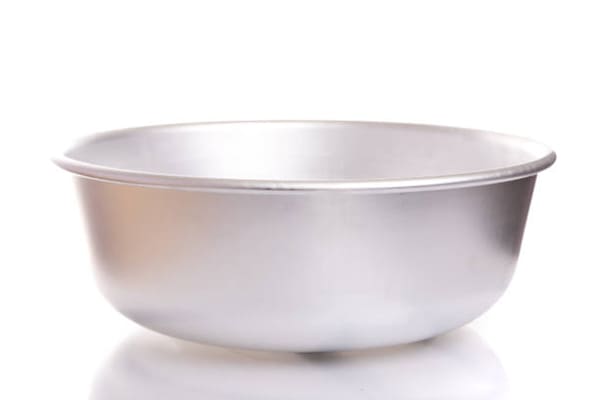
1100 aluminum circle for cookware
Put desiccant in the roll and wrap it with plastic cloth. The sealing part of the outermost plastic cloth shall be firmly stuck with adhesive tape, and the remaining parts at both ends of the plastic cloth shall be inserted into the pipe core.
Finally, put the wrapped aluminum foil roll on the cross and fix it with steel tape, and then stick a case card on the end face of the aluminum foil roll.
Pay attention to the method of transportation, and handle with care when loading and unloading.
Common problems in the application of aluminum discs
Aluminum discs are widely used in the production of kitchenware, and the following problems are often encountered in the spinning or drawing process. Huawei Aluminum tries our best to avoid these problems during the production and transportation process.
Spinning cracking
In the spinning process, due to the presence of sand, impurities, or embedded metal, the aluminum wheel may have crack, edge crack and some other problems. This wastes a lot of time and cost. Such problems often occur in aluminum discs produced from scrap.
Orange peel problem
During spinning, sometimes the surface of the finished pot is not smooth and needs to be polished. The main reason for these problems is that the grain size of aluminum circle is secondary or the head and tail of materials are not completely removed in the production process of aluminum circle & disc.
Surface oxidation
Although aluminum disc has good rust resistance, if aluminum disc is corroded by rainwater or water during storage or transportation process, its surface is easy to be oxidized. It will affect the beauty of kitchenware. Therefore, the package must be tight and with enough desiccant.
Insufficient weight
The packaging of aluminum circle is wooden pallet. Generally, the weight of each pallet is about 1000kg to 1500kg. According to international standards, the weight tolerance is+/- 3 ‰. However, due to the difference in scale and packaging weight, many factories will be short of 5KGS to 10KGS per pallet.

road sign aluminum circle
Application of 1100 aluminum circle
1100 aluminum circle is widely used in cookware, utensils, pans, pots, pressure cookers, lampshades, lighting and road signs due to its excellent deep drawing properties.
Aluminum discs can be processed by punching machines and spinning machines in the processing of cookware and lampshades.
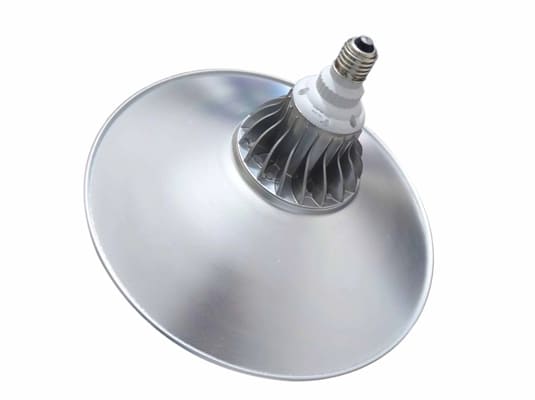
1100 aluminum disc circle application
The surface of the finished product made of aluminum discs is smooth and bright, without burrs or flash. Aluminum rounds have become the first choice of cookware manufacturers due to their stable performance and high cost performance.
- Cookware: One of the most prominent applications of 1100 aluminium circle is in the manufacturing of cookware, such as pots, pans, and lids. The alloy’s excellent heat conductivity, corrosion resistance, and formability make it ideal for these products.
- Lighting Fixtures: 1100 aluminum circles create reflectors and components for lighting fixtures. Their high reflectivity and formability are essential for optimizing light distribution.
- Signage: For road signs, traffic signs, and nameplates, 1100 aluminum circles are commonly used. Their resistance to corrosion and ability to be easily fabricated into shapes and engraved upon make them suitable.
- Heat Exchangers: In HVAC (Heating, Ventilation, and Air Conditioning) systems and refrigeration equipment, heat exchangers utilize 1100 Aluminum Circles, whose thermal conductivity contributes to efficient heat transfer.
- Electrical Components: Because of their high electrical conductivity, these aluminum circles may find use in electrical components and applications that demand the efficient flow of electricity.
- Food Packaging: Companies can utilize 1100 Aluminum Circles to produce packaging materials and foils for the food industry. Their non-reactive nature makes them suitable for contact with food.
- Decorative and Artistic Products: People use aluminum circles with high polish for decorative items like jewelry, sculptures, and ornaments.
Casting production process and its introduction
The purpose of melting and casting is to produce alloys with satisfactory composition and high purity of melt, so as to create favorable conditions for casting alloys of various shapes.
Melting and casting process steps: batching --- feeding --- melting --- stirring after melting, slag removal --- pre-analysis sampling --- adding alloy to adjust the composition, stirring --- refining --- static Setting——Guide furnace casting.
Hot rolling production process and its introduction
- 1. Hot rolling generally refers to rolling above the metal recrystallization temperature;
- 2. During the hot rolling process, the metal has both hardening and softening processes. Due to the influence of deformation speed, as long as the recovery and recrystallization process is too late, there will be a certain work hardening;
- 3. The recrystallization of the metal after hot rolling is incomplete, that is, the coexistence of recrystallized structure and deformed structure;
- 4. Hot rolling can improve the processing performance of metals and alloys, reduce or eliminate casting defects.
- 1. The casting and rolling temperature is generally between 680°C and 700°C. The lower the better, the stable casting and rolling line usually stops once a month or more to re-stand. During the production process, it is necessary to strictly control the liquid level of the front tank to prevent low liquid level;
- 2. Lubrication uses C powder with incomplete combustion of gas for lubrication, which is also one of the reasons for the dirty surface of casting and rolling materials;
- 3. The production speed is generally between 1.5m/min-2.5m/min;
- 4. The surface quality of products produced by casting and rolling is generally relatively low, and generally cannot meet products with special physical and chemical performance requirements.
- 1. Cold rolling refers to the rolling production method below the recrystallization temperature;
- 2. There will be no dynamic recrystallization during the rolling process, and the temperature will rise to the recovery temperature at most, and the cold rolling will appear in a work hardening state, and the work hardening rate will be large;
- 3. The cold-rolled sheet and strip have high dimensional accuracy, good surface quality, uniform structure and performance, and products in various states can be obtained with heat treatment;
- 4. Cold rolling can roll out thin strips, but at the same time, it has the disadvantages of high energy consumption for deformation and many processing passes.
- 1. Finishing is a processing method to make the cold-rolled sheet meet the customer's requirements, or to facilitate the subsequent processing of the product;
- 2. The finishing equipment can correct the defects produced in the hot rolling and cold rolling production process, such as cracked edge, oily, poor plate shape, residual stress, etc. It needs to ensure that no other defects are brought into the production process;
- 3. There are various finishing equipments, mainly including cross-cutting, slitting, stretching and straightening, annealing furnace, slitter, etc.
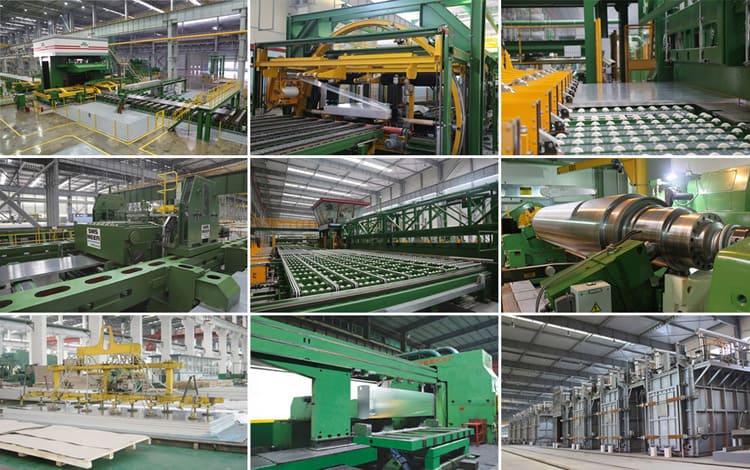
Casting and rolling process
Casting and rolling process: liquid metal, front box (liquid level control), casting and rolling machine (lubrication system, cooling water), shearing machine, coiling machine.
Cold rolling production process

Introduction to finishing production process
Aluminum alloy has the characteristics of low density, good mechanical properties, good processing performance, non-toxic, easy to recycle, excellent electrical conductivity, heat transfer and corrosion resistance, so it has a wide range of applications.
Aerospace: used to make aircraft skins, fuselage frames, girders, rotors, propellers, fuel tanks, wall panels and landing gear struts, as well as rocket forging rings, spacecraft wall panels, etc.
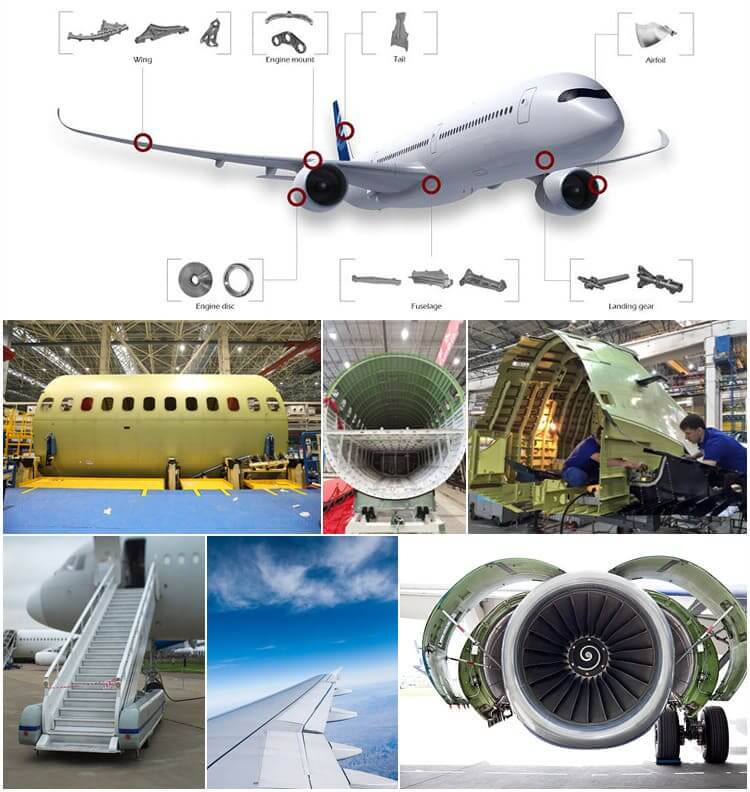
Aluminum alloy used for aerospace
Transportation: used for car body structure materials of automobiles, subway vehicles, railway passenger cars, high-speed passenger cars, doors and windows, shelves, automotive engine parts, air conditioners, radiators, body panels, wheels and ship materials.
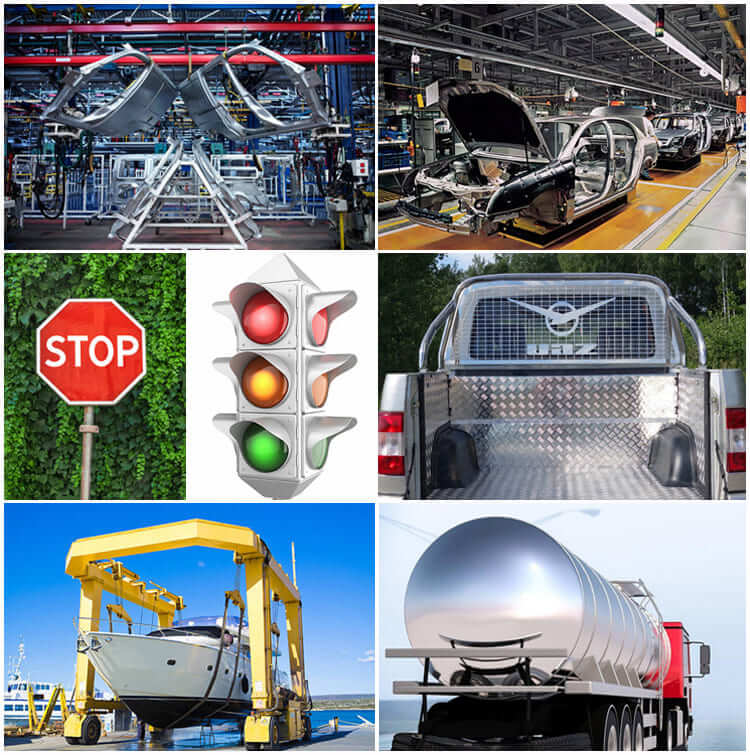
Traffic application
Packaging: All-aluminum pop cans are mainly used as metal packaging materials in the form of thin plates and foils, and are made into cans, lids, bottles, barrels, and packaging foils. Widely used in the packaging of beverages, food, cosmetics, medicines, cigarettes, industrial products, medicines, etc.
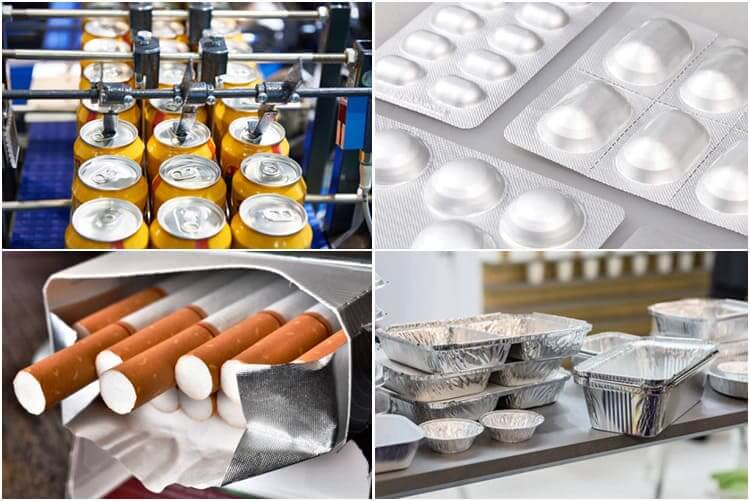
Packaging application
Printing: Mainly used to make PS plates, aluminum-based PS plates are a new type of material in the printing industry, used for automatic plate making and printing.

PS printing
Architectural decoration: aluminum alloy is widely used in building structures, doors and windows, suspended ceilings, decorative surfaces, etc. due to its good corrosion resistance, sufficient strength, excellent process performance and welding performance.
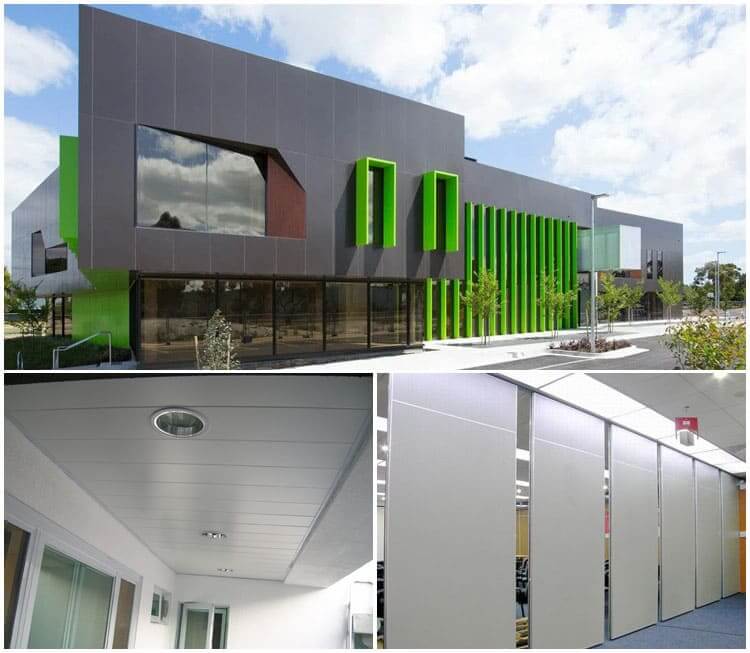
Aluminum alloy construction application
Electronic products: computers, mobile phones, refrigerator shells, radiators, etc.

Electronic product application
Kitchen supplies: aluminum pots, aluminum basins, rice cooker liners, household aluminum foil, etc.

Kitchen application
Packaging Of Aluminum Sheet/Coil
Every detail of packaging is where we pursue perfect service. Our packaging process as a whole is as follows:
Lamination: clear film, blue film, micro-mucosal, high-mucosal, laser cutting film (2 brands, Novacell and Polyphem);
Protection: paper corner protectors, anti-pressure pads;
drying: desiccant;
Tray: fumigated harmless wooden tray, reusable iron tray;
Packing: Tic-tac-toe steel belt, or PVC packing belt;
Material Quality: Completely free from defects such as white rust, oil spots, rolling marks, edge damage, bends, dents, holes, break lines, scratches, etc., no coil set.
Port: Qingdao or other ports in China.
Lead time: 15-45 days.

Aluminum sheet/plate packaging process
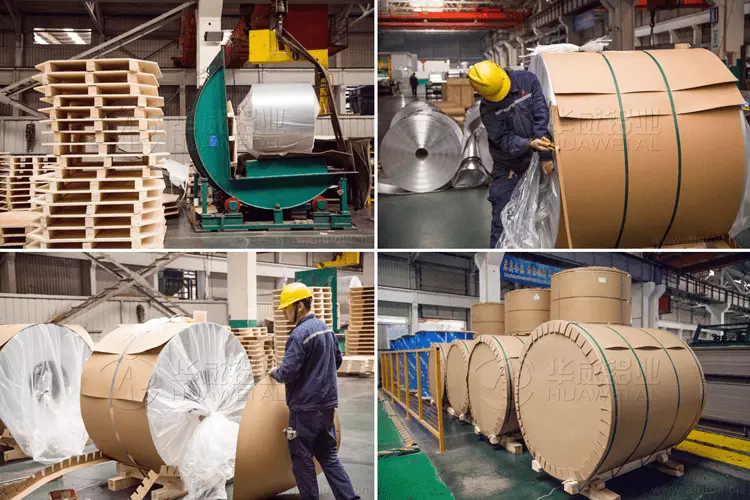
Aluminum coil packaging process
F: Are you a manufacturer or a trader?
Q: We are a manufacturer, our factory is at No.3 Weier Road, Industrial Zone, Gongyi, Henan, China.
F: What is the MOQ for ordering the product?
Q: Our MOQ is 5 tons, and some special products will have a minimum order quantity of 1 or 2 tons.
F: How long is your lead time?
Q: Generally our lead time is about 30 days.
F: Do your products have quality assurance?
Q: Yes, if there is a quality problem with our products, we will compensate the customer until they are satisfied.
Related Products
Latest Blogs
6061 vs 7075 aluminum
"6061" and "7075" are two common aluminum alloy grades, which are widely used in many industrial fields, especially in aviation, aerospace, transportation and structural manufacturing.
Aluminum Foil Used in Air Fryers
Aluminum foil is widely used in daily life, mainly due to its light weight, good ductility, moderate price, and excellent heat conduction and light-shielding properties.
Reasons why the surface of honeycomb aluminum foil cannot be bonded with the adhesive
Aluminum honeycomb panels have good performance in use. They have good strength and good impact resistance. They can be well designed in use. Therefore, they are widely used at present.
Introduction hardness of 1000-8000 series aluminum alloys
1000-8000 series basically covers all aluminum alloy series products. Different series of products have different performance and hardness.
